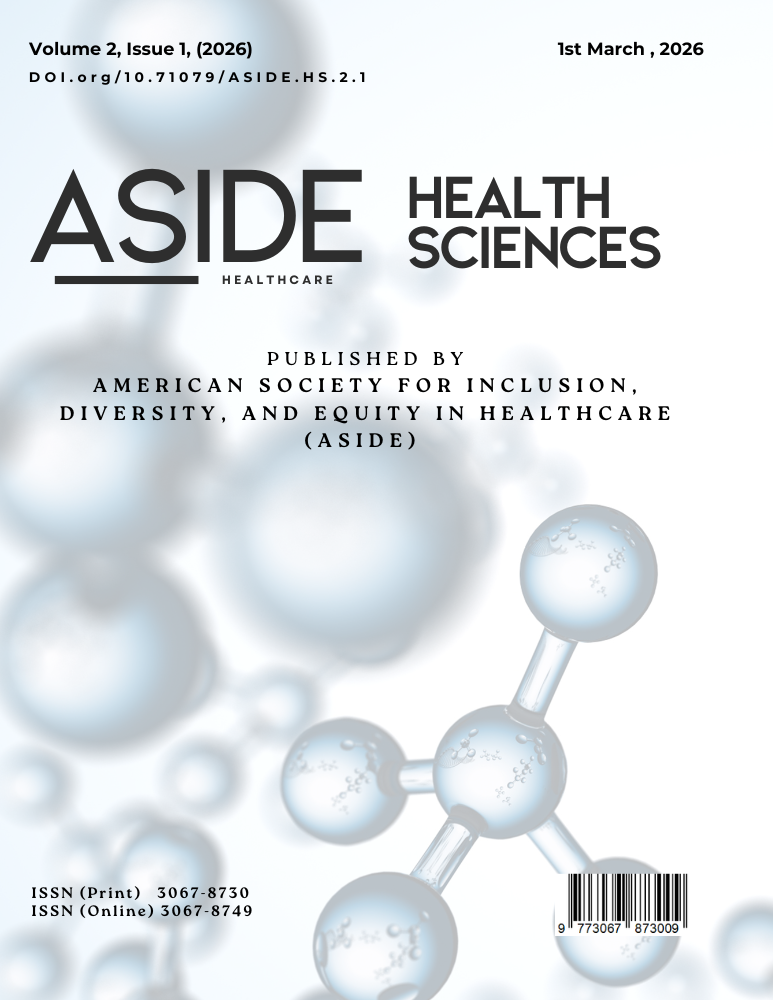Abstract
Introduction: Hysterectomy for very large uteri is technically challenging and often requires open surgery. Minimally invasive approaches, such as robotic and laparoscopic techniques, provide alternatives, but their comparative safety and effectiveness for extremely large uteri remain uncertain.
Methods: A systematic review was conducted following PRISMA 2020 guidelines. “PubMed and Scopus were searched through June 2025 using predefined keywords (e.g., ‘hysterectomy,’ ‘robotic,’ ‘robot-assisted,’ ‘laparoscopic,’ ‘uterus,’ ‘large,’ ‘enlarged,’ ‘size,’ ‘weight’); no prospective or randomized trials were identified.” for studies comparing robotic and laparoscopic hysterectomy in women with large or extremely large uteri
Results: Robotic hysterectomy (RH) showed advantages in selected outcomes for extremely large uteri. One study reported a 70-minute reduction in operative time with RH for uteri >1000 g. RH was also associated with lower conversion rates (0–4.3%) compared to laparoscopic hysterectomy (LH) (5.3–10.9%). In moderately large uteri (~500–750 g), RH reduced hemoglobin drops but had longer operative times. Complication rates were generally low, although ureteral injury was more frequent with RH in two studies. Length of hospital stay was similar across approaches.
Conclusion: Robotic hysterectomy may offer clinical and economic advantages over conventional laparoscopy for extremely large uteri but the impact of surgical experience should be carefully considered. Limitations include the retrospective design of all four cohorts, small sample sizes, the absence of randomized trials, and clinical and methodological heterogeneity precluding meta-analysis.
References
1. Donnez J, Taylor HS, Marcellin L, Dolmans MM. Uterine fibroid-related infertility: mechanisms and management. Fertil Steril. 2024: 31 [PMID: 38453041, https://doi.org/10.1016/j.fertnstert.2024.02.049]
2. Eltoukhi HM, Modi MN, Weston M, Armstrong AY, Stewart EA. The health disparities of uterine fibroid tumors for African American women: a public health issue. Am J Obstet Gynecol. 2014: 194 [PMID: 23942040, https://doi.org/10.1016/j.ajog.2013.08.008]
3. Borah BJ, Nicholson WK, Bradley L, Stewart EA. The impact of uterine leiomyomas: a national survey of affected women. Am J Obstet Gynecol. 2013: 319 e1 [PMID: 23891629, https://doi.org/10.1016/j.ajog.2013.07.017]
4. Li B, Wang F, Chen L, Tong H. Global epidemiological characteristics of uterine fibroids. Arch Med Sci. 2023: 1802 [PMID: 38058724, https://doi.org/10.5114/aoms/171786]
5. Hazimeh D, Coco A, Casubhoy I, Segars J, Singh B. The Annual Economic Burden of Uterine Fibroids in the United States (2010 Versus 2022): A Comparative Cost-Analysis. Reprod Sci. 2024: 3743 [PMID: 39455488, https://doi.org/10.1007/s43032-024-01727-0]
6. Do TK, Estevez JP, Canlorbe G, Gonthier C, Koskas M. Robotic versus open hysterectomy for very large uterus (more than 1000 g): A bicentric retrospective study of 150 patients. Int J Gynaecol Obstet. 2025: [PMID: 40515535, https://doi.org/10.1002/ijgo.70310]
7. Yadav P, Agrawal M, Chaudhari K, Sindhu A. Challenging Surgical Management of Giant Uterine Leiomyomas With Ileal Resection: A Clinical Case Study. Cureus. 2024: e66017 [PMID: 39221356, https://doi.org/10.7759/cureus.66017]
8. Soomro NA, Hashimoto DA, Porteous AJ, Ridley CJA, Marsh WJ, Ditto R, Roy S. Systematic review of learning curves in robot-assisted surgery. BJS Open. 2020: 27 [PMID: 32011823, https://doi.org/10.1002/bjs5.50235]
9. Lenfant L, Canlorbe G, Belghiti J, Kreaden US, Hebert AE, Nikpayam M, Uzan C, Azais H. Robotic-assisted benign hysterectomy compared with laparoscopic, vaginal, and open surgery: a systematic review and meta-analysis. J Robot Surg. 2023: 2647 [PMID: 37856058, https://doi.org/10.1007/s11701-023-01724-6]
10. Wright JD, Ananth CV, Lewin SN, Burke WM, Lu YS, Neugut AI, Herzog TJ, Hershman DL. Robotically assisted vs laparoscopic hysterectomy among women with benign gynecologic disease. JAMA. 2013: 689 [PMID: 23423414, https://doi.org/10.1001/jama.2013.186]
11. Page MJ, McKenzie JE, Bossuyt PM, Boutron I, Hoffmann TC, Mulrow CD, Shamseer L, Tetzlaff JM, Akl EA, Brennan SE, Chou R, Glanville J, Grimshaw JM, Hrobjartsson A, Lalu MM, Li T, Loder EW, Mayo-Wilson E, McDonald S, McGuinness LA, Stewart LA, Thomas J, Tricco AC, Welch VA, Whiting P, Moher D. The PRISMA 2020 statement: an updated guideline for reporting systematic reviews. Rev Esp Cardiol (Engl Ed). 2021: 790 [PMID: 34446261, https://doi.org/10.1016/j.rec.2021.07.010]
12. Ouzzani M, Hammady H, Fedorowicz Z, Elmagarmid A. Rayyan-a web and mobile app for systematic reviews. Syst Rev. 2016: 210 [PMID: 27919275, https://doi.org/10.1186/s13643-016-0384-4]
13. Sinha R, Bana R, Sanjay M. Comparison of Robotic and Laparoscopic Hysterectomy for the Large Uterus. JSLS. 2019: [PMID: 30675091, https://doi.org/10.4293/JSLS.2018.00068]
14. Ito TE, Vargas MV, Moawad GN, Opoku-Anane J, Shu MK, Marfori CQ, Robinson JK, 3rd. Minimally Invasive Hysterectomy for Uteri Greater Than One Kilogram. JSLS. 2017: [PMID: 28352147, https://doi.org/10.4293/JSLS.2016.00098]
15. Jeong SY, Kim K, Ryu JW, Cha J, Park ST, Park SH. Comparison of Surgical Outcomes of Robotic versus Conventional Laparoscopic Hysterectomy of Large Uterus with Gynecologic Benign Disease. J Pers Med. 2022: [PMID: 36556262, https://doi.org/10.3390/jpm12122042]
16. Moawad GN, Abi Khalil ED, Tyan P, Shu MK, Samuel D, Amdur R, Scheib SA, Marfori CQ. Comparison of cost and operative outcomes of robotic hysterectomy compared to laparoscopic hysterectomy across different uterine weights. J Robot Surg. 2017: 433 [PMID: 28144809, https://doi.org/10.1007/s11701-017-0674-4]
17. Manoucheri E, Cohen SL, Sandberg EM, Kibel AS, Einarsson J. Ureteral injury in laparoscopic gynecologic surgery. Rev Obstet Gynecol. 2012: 106 [PMID: 22866190,
18. Tang FH, Tsai EM. Learning Curve Analysis of Different Stages of Robotic-Assisted Laparoscopic Hysterectomy. Biomed Res Int. 2017: 1827913 [PMID: 28373977, https://doi.org/10.1155/2017/1827913]
19. Paul-Dehlinger R, Vappereau A, Bras AL, Oliveira J, Favier A, Belghiti J, Uzan C, Durand-Zaleski I, Canlorbe G. Cost-effectiveness of robot-assisted total hysterectomy for benign pathologies compared to laparoscopic surgery: A retrospective study with propensity score. J Gynecol Obstet Hum Reprod. 2024: 102821 [PMID: 39038739, https://doi.org/10.1016/j.jogoh.2024.102821]
20. Chen C, Zhang M, Tang J, Pu K. Cost-effectiveness of robotic surgery compared to conventional laparoscopy for the management of early-stage cervical cancer: a model-based economic evaluation in China. BMJ Open. 2024: e087113 [PMID: 39572093, https://doi.org/10.1136/bmjopen-2024-087113]

This work is licensed under a Creative Commons Attribution 4.0 International License.
Copyright (c) 2025 ASIDE Health Sciences


